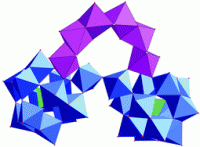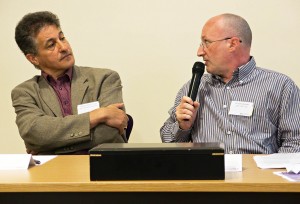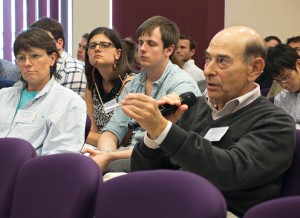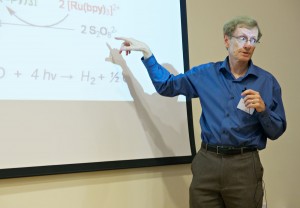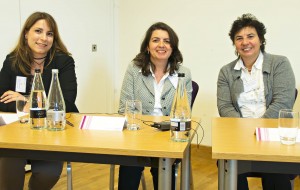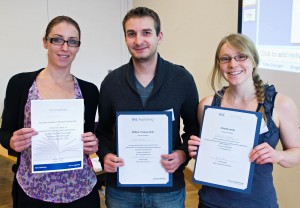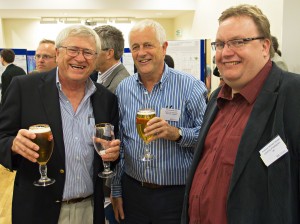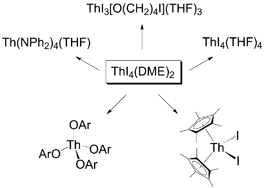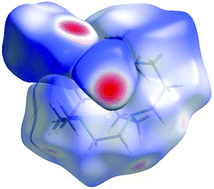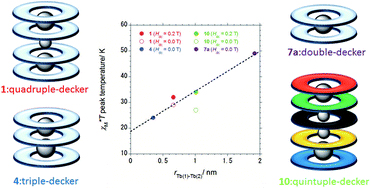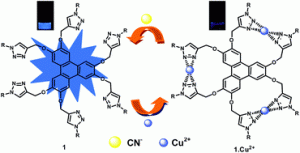This month sees the following articles in Dalton Transactions that are in the top ten most accessed:-
Recent progress in the synthesis of inorganic nanoparticles
C. N. R. Rao , H. S. S. Ramakrishna Matte , Rakesh Voggu and A. Govindaraj
Dalton Trans., 2012,41, 5089-5120 DOI: 10.1039/C2DT12266A
A one-dimensional coordination polymer constructed from planar pentanuclear copper(ii) clusters with a flexible tripodal ligand
Qilong Zhu , Chaojun Shen , Chunhong Tan , Tianlu Sheng , Shengmin Hu and Xintao Wu
Dalton Trans., 2012,41, 9604-9606 DOI: 10.1039/C2DT30912B
Nothing frustrating about “Frustrated Lewis pairs”
Douglas W. Stephan
Dalton Trans., 2012,41, 9015-9015 DOI: 10.1039/C2DT90093A
Pushing the frontiers in polyoxometalate and metal oxide cluster science
De-Liang Long and Leroy Cronin
Dalton Trans., 2012,41, 9815-9816 DOI: 10.1039/C2DT90121H
Synthesis of facial cyclometalated iridium(iii) complexes triggered by tripodal ligands
Toshiyuki Moriuchi , Lisheng Mao , Hsyueh-Liang Wu , Satoshi D. Ohmura , Masami Watanabe and Toshikazu Hirao
Dalton Trans., 2012,41, 9519-9525 DOI: 10.1039/C2DT12309F
Controlled association of single-molecule magnets (SMMs) into coordination networks: towards a new generation of magnetic materials
Ie-Rang Jeon and Rodolphe Clérac
Dalton Trans., 2012,41, 9569-9586 DOI: 10.1039/C2DT30906H
Metal-directed assembly of chiral bis-Zn(ii) Schiff base structures
Martha V. Escárcega-Bobadilla , Daniele Anselmo , Sander J. Wezenberg , Eduardo C. Escudero-Adán , Marta Martínez Belmonte , Eddy Martin and Arjan W. Kleij
Dalton Trans., 2012,41, 9766-9772 DOI: 10.1039/C2DT30642E
Cyclometalated ruthenium(ii) complexes with a bis-carbene CCC-pincer ligand
You-Ming Zhang , Jiang-Yang Shao , Chang-Jiang Yao and Yu-Wu Zhong
Dalton Trans., 2012,41, 9280-9282 DOI: 10.1039/C2DT31015E
Enhanced stability and CO2 affinity of a UiO-66 type metal–organic framework decorated with dimethyl groups
Yuting Huang , Weiping Qin , Zhong Li and Yingwei Li
Dalton Trans., 2012,41, 9283-9285 DOI: 10.1039/C2DT30950E
Post-modification of a MOF through a fluorescent-labeling technology for the selective sensing and adsorption of Ag+ in aqueous solution
Lejie Zhang , Yuan Jian , Jian Wang , Cheng He , Xuezhao Li , Tao Liu and Chunying Duan
Dalton Trans., 2012,41, 10153-10155 DOI: 10.1039/C2DT30689A
Why not take a look at the articles today and blog your thoughts and comments below.
Fancy submitting an article to Dalton Transactions ? Then why not submit to us today or alternatively email us your suggestions.
Comments Off on Top ten most accessed articles in July
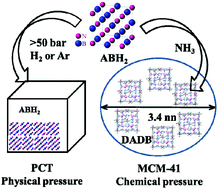 Hydrogen has been investigated for some time as a possible renewable energy source but its practical application has been limited by storage problems. In this HOT article, Tom Autrey and co-workers have studied the stabilisation and destabilisation of ammonium borohydride with a view to its use as a promising hydrogen storage material. The results suggest that ammonium borohydride could be stabilized by high pressure hydrogen or inert gas.
Hydrogen has been investigated for some time as a possible renewable energy source but its practical application has been limited by storage problems. In this HOT article, Tom Autrey and co-workers have studied the stabilisation and destabilisation of ammonium borohydride with a view to its use as a promising hydrogen storage material. The results suggest that ammonium borohydride could be stabilized by high pressure hydrogen or inert gas.










